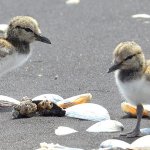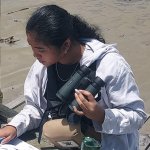By Marcela Castellino and Marina Castellino
Translated from the Spanish by the WHSRN Executive Office
By Marcela Castellino and Marina Castellino
Translated from the Spanish by the WHSRN Executive Office
Migratory shorebirds know neither borders, languages, economics, or politics. They simply know of wetlands, water, and invertebrates, they know of places that provide them with the resources they need at different times of the year. These places are their home throughout their complex life cycle that leads them to cover large distances that are incomprehensible to most living beings.
Mono Lake and Great Salt Lake are two such homes; they are the most important for the Wilson`s Phalarope (Phalaropus tricolor) between its breeding season and the beginning of its southern migration. It is in these two lakes that a very high percentage of the species’ global population congregates for a few weeks of the year. Here the phalaropes number in the thousands or hundreds of thousands, and eat brine shrimp and brine flies non-stop while they change their reproductive plumage for the more discreet attire they will wear during the austral summer. The destination of the great majority of these phalaropes will be the Mar Chiquita Lagoon, which will welcome them with the first warmth of the austral spring.
But despite their beauty, their incredible ability to migrate thousands of miles and their relatively abundant numbers, phalaropes are at risk. The saline lakes on which they depend today are at serious conservation risk. There is no other type of environment that offers the phalaropes the resources they need. And this leads to a simple but stark conclusion: without ecologically healthy saline lakes, phalaropes will disappear.
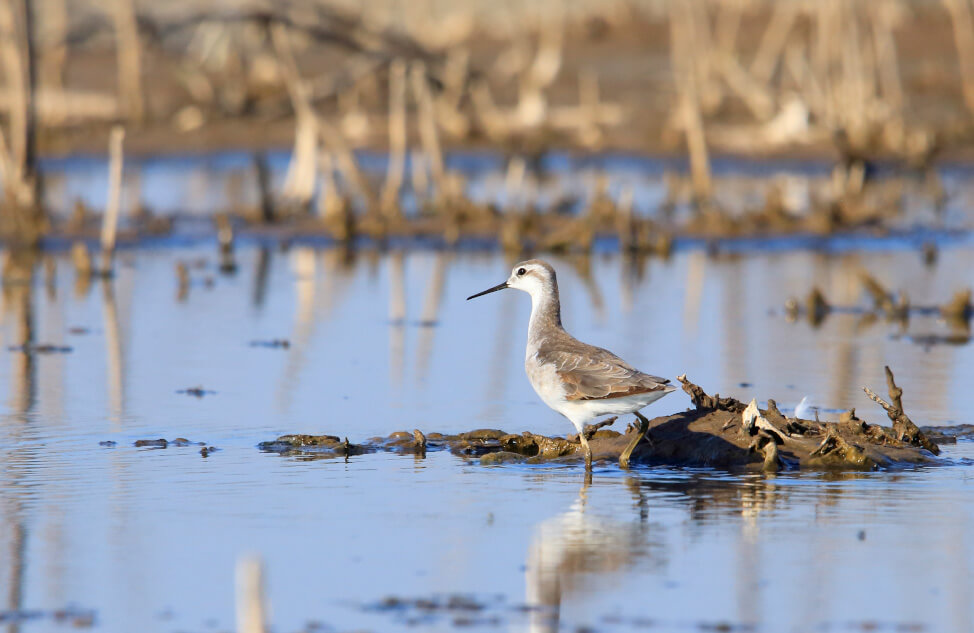
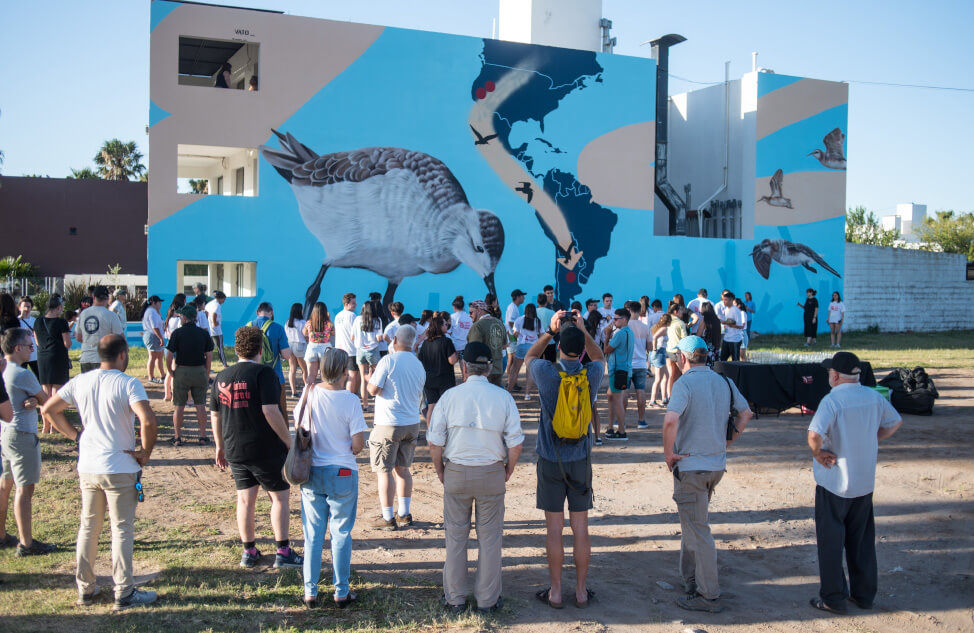
Left: Nonbreeding Wilson’s Phalarope. Photo: Hugo Giraudo. Right: Mural by Cordovan artist Franco “Vato” Cervato in Miramar de Ansenuza in the Province of Cordoba in Argentina, dedicated to the Wilson’s Phalarope and the lakes twinned 30 years ago as part of WHSRN. Photo: Fundación Líderes de Ansenuza.
This call for attention to the conservation status of saline lakes, and therefore to the vulnerability of the phalaropes, is of great interest for several individuals and organizations who have been focusing their work on their conservation, mainly in these three saline lakes. During the last four years, we have worked hard to reestablish existing links between partners in the three saline lakes, and to generate new links, understanding that the scale of the problem requires the collaboration of all those involved, even though we are far apart geographically.
Today we are beginning to see the results of this sustained work of linking sister lakes, which supports and strengthens the work of local stakeholders at each site, weaving a delicate web that connects and sustains, amplifying and expanding the impact of these actions at the hemispheric level.
On June 18, 2023, as part of the already established and successful Mono Basin Bird Chautauqua, the first Mono Basin Phalarope Festival was held. But let’s go back a few months to understand where the inspiration for the celebration came from.

Visitors participated in several field trips during which they learned about the site and its ecology and conservation from local partners. Photo: Marcela Castellino.
In December 2022, an international event was held in Laguna Mar Chiquita, Córdoba (Argentina). This meeting celebrated 30 years since the twinning of Mono Lake, the Great Salt Lake, and Mar Chiquita Lagoon, three saline lakes that are fundamental for the survival of the Wilson’s Phalarope. The main focus of the meeting was to strengthen the ties between people working at each site with the identification of opportunities for support, training, education, and collaboration on projects that support the conservation of these wonderful wetlands.
The highlight of the event was the unveiling of a mural by Cordovan artist Franco “Vato” Cervato, who would later embark on a trip to paint phalaropes in Lee Vining (California) and Farmington (Utah). The event ended with the commitment to keep these ties active, and with the hope of being able to give back to those who had the opportunity to visit Mar Chiquita.
That opportunity came with the celebration of the 20th Mono Basin Bird Chautauqua in June 2023, held in Lee Vining, a small town on the shores of Mono Lake. A delegation of visitors from Argentina including the staff from the newly created Ansenuza National Park, staff from Aves Argentinas, Fundación Líderes de Ansenuza, and Manomet had the opportunity to visit Mono Lake. This group was also joined by partners from Great Salt Lake, Sageland Collaborative, and Audubon National Society to have representatives from each of the three twinned saline lakes.
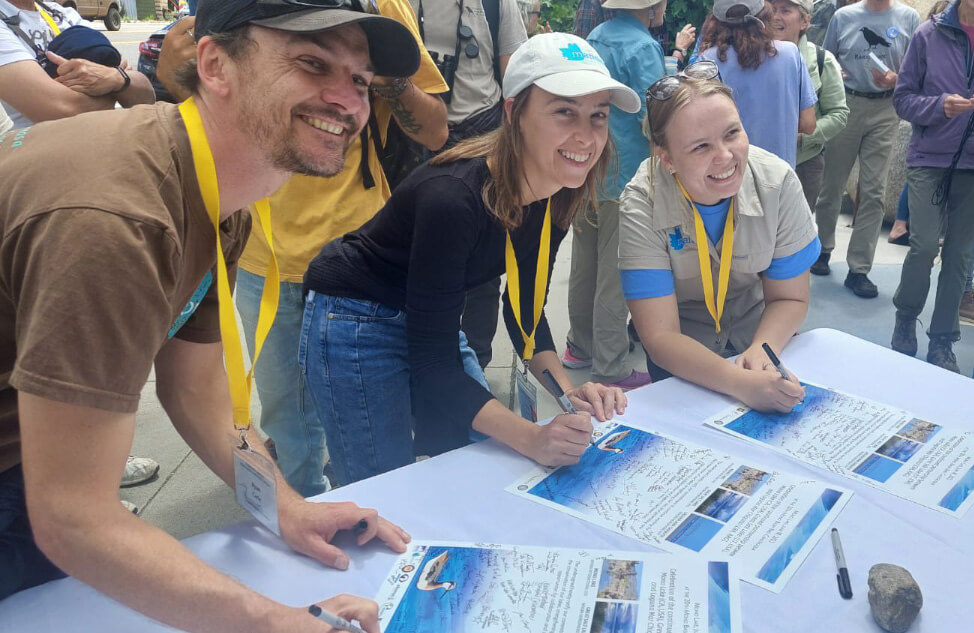
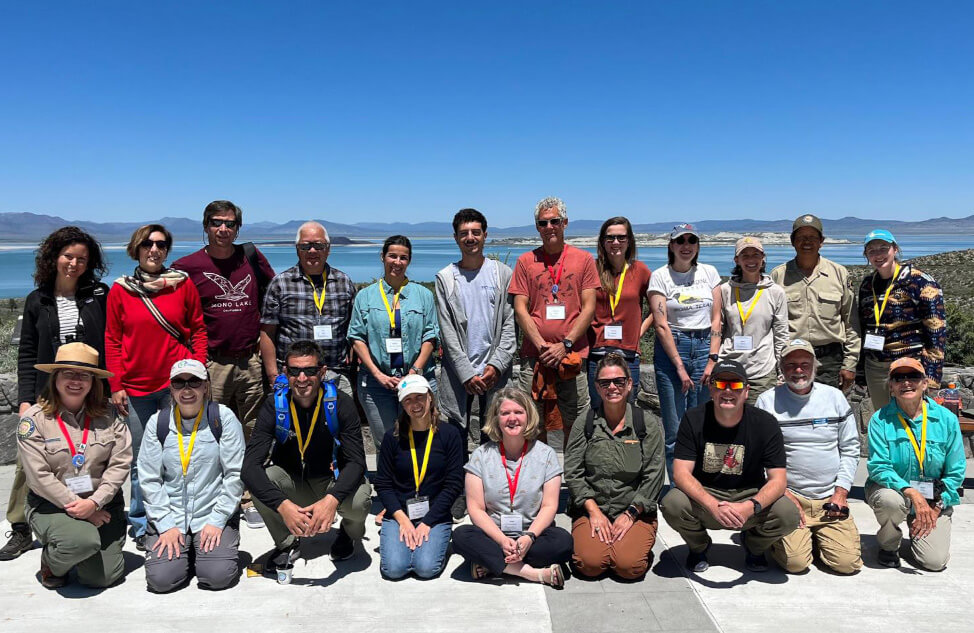
Left: Ratification of the twinning agreement between the sites, renewing the commitment to work together for conservation. Photo: Ryan Carle. Right: Group of representatives from the three sister saline lakes participating in the celebrations at Mono Lake. Photo: Ryan Carle.
In addition to participating in the different field trips offered during the Mono Basin Bird Chautauqua, the visitors had the opportunity to learn from the staff of the Mono Lake Committee, Oikonos Ecosystem Knowledge, California State Parks, and the U.S. Forest Service about the ecology of the site, the challenges and lessons learned, the management of protected areas within this saline lake, the educational program that has been carried out for many years at the site, and the research and monitoring of the saline lake.
As part of these activities, June 18 was dedicated to the celebration of the phalaropes, especially the Wilson’s Phalarope. This small migratory bird fits in the palm of a hand, but can cross the entire hemisphere in a few days with its incredible migrations, reminding us of the magic of nature, but also of its fragility and our responsibility to protect the saline lakes along their journey.
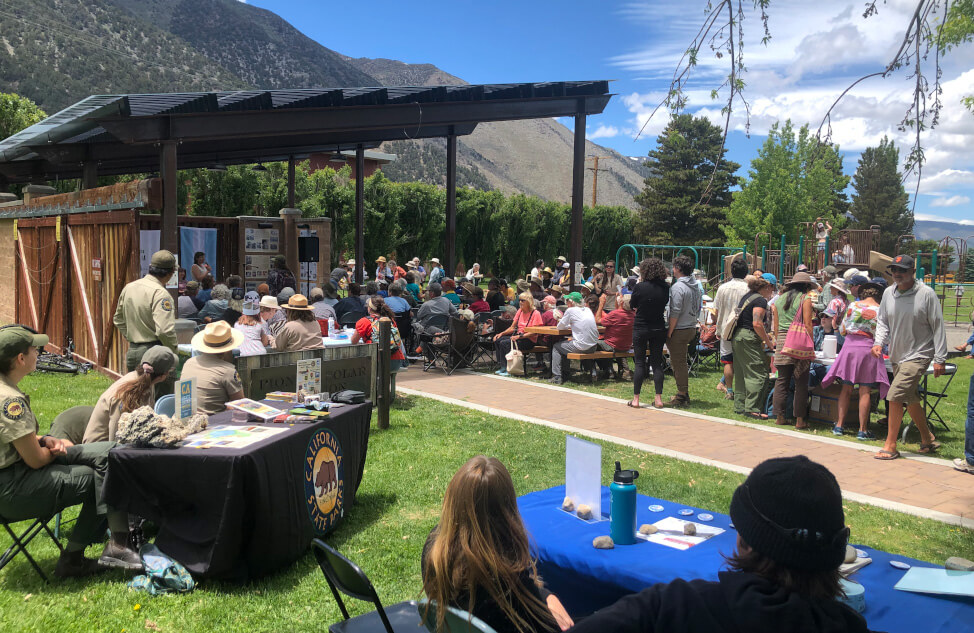
Dozens of people participated in the festival held at Lee Vining to celebrate phalaropes and saline lakes. Photo: Ryan Carle.
The festival took place at Hess Park in Lee Vining on a sunny day that allowed a large number of people to attend. A phalarope costume contest, a bird song imitation contest, live music, and the presence of booths of local organizations and artists were part of the celebration and invited the community to learn more about international linkages and the phalaropes and their migratory exploits.
Among the highlights of the day, three murals dedicated to Wilson’s Phalarope located on different walls in the town of Lee Vining were inaugurated, and the ratification of the twinning of the three salt lakes with the signing from all those present at the celebration. These murals were done by the same artist from Córdoba who painted the mural in Mar Chiquita in December 2022.
During this shared time, work meetings were also held. Needs and future actions were identified, many of which are already beginning to materialize. The possibility of sharing time together and strengthening ties is undoubtedly a powerful source of inspiration, renews energy, and fuels the enthusiastic commitment of those working in conservation. These ties will continue to grow and strengthen, for the good of the phalaropes, biodiversity, communities and, of course, saline lakes.
Cover Photo: Phalaropes at Mono Lake. Photo: David Carle.





